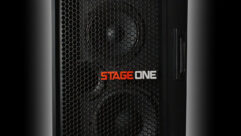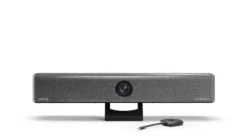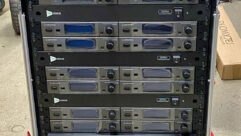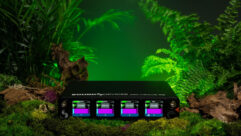

Cutting Through Wireless Mic Confusion
unoccupied by TV channels. Some Pro AV readers have said they’ve put wireless microphone upgrades on hold until they figure out whether the new FCC rules will cause interference when white space devices (now known as TV band devices) come online.
Microphone manufacturers such as Audio-Technica, Senn-heiser, and Shure are scrambling to update their Web sites with the latest information and frequently asked questions, but as of this writing, the FCC hadn’t released all the details of its ruling.
As if wireless microphone users weren’t wary before the Federal Communications Commission ruled on Nov. 4 that a new breed of unlicensed wireless devices could operate in the “white spaces” unoccupied by TV channels. Some Pro AV readers have said they’ve put wireless microphone upgrades on hold until they figure out whether the new FCC rules will cause interference when white space devices (now known as TV band devices) come online. Others are exploring new systems that operate in the 2.4 GHz range.
“Based on what we know so far, people adding new wireless systems, or replacing systems that operate in the 700 MHz band, should look first at the ‘protected’ TV channels in their area–those that will be off-limits to white space devices,” says Chris Lyons, manager of technical and educational communications for Shure. “In most of the top markets, there will be from one to four of these. Most of them will be within TV channels 14-20, but in 13 major cities there will be two additional channels in the 21-51 range. For many facilities, these channels will be sufficient to hold all of the wireless microphones that they need. In Houston, for example, there will be four protected channels, which could accommodate 30 Shure UHF-R systems.”
According to the FCC, white space, or TV band, devices will fall into two categories AV professionals need to understand when they begin planning their wireless systems:
- Fixed devices will be permitted to operate with effective radiating power up to 4 watts on channels 2-51, with the exceptions of channels 3, 4, and 37.
- Personal/Portable devices will be restricted to channels 21-51, and are also not allowed in channel 37, which is reserved or radio astronomy and medical telemetry. These devices are limited to 100 milliwatts operating power, or 40 milliwatts if they’re operating adjacent to an active station. This should reduce their range and therefore the possibility to cause interference.
Protections In Place
The good news is, the FCC’s commissioners obviously weren’t 100 percent convinced that white space devices, as currently developed, could remain perfectly clear of incumbent systems like wireless mics. To avoid interference with wireless mics, commissioners said the new devices must employ spectrum sensing to listen for wireless mics and TV stations. And until they prove they can spectrum sense reliably, they have to adhere to a geolocation database, in which TV channels and other spectrum users will register their systems throughout the United States.
“Larger facilities will be able to register which channels they are using in the database so that white space devices will avoid transmitting on those channels at that location,” says Lyons. “This will also enable facilities to continue using systems that they already own in the core TV band.”
What of 2.4 GHz systems? The problem with the 2.4 GHz range is its already rife with unlicensed devices–Wi-Fi, Bluetooth, etc. It requires more power to transmit and it’s highly susceptible to interference (ever lost a Wi-Fi connection when the microwave went on?). For now, it’s best to work through the FCC’s decisions and adopt systems in the UHF range.










